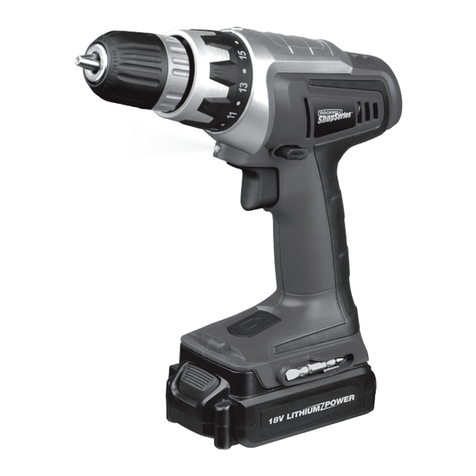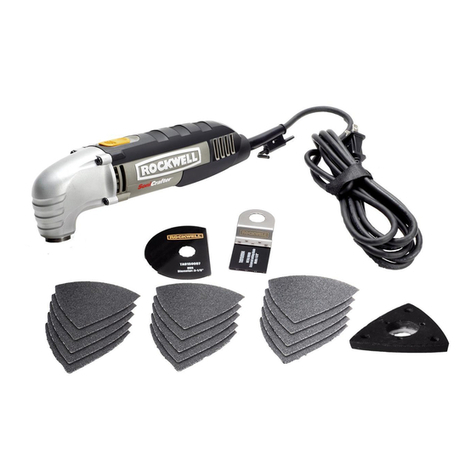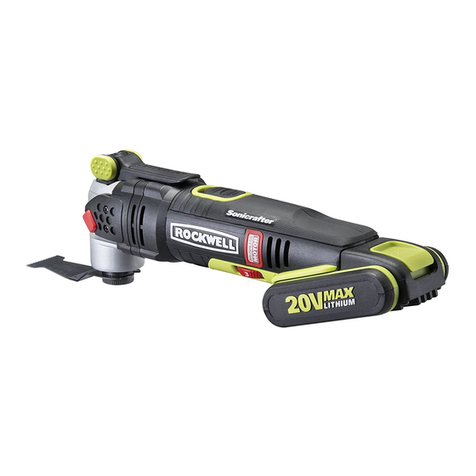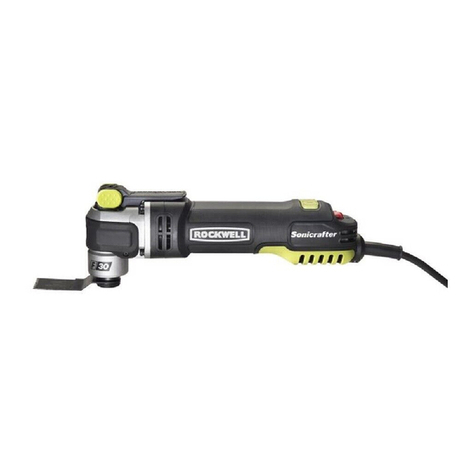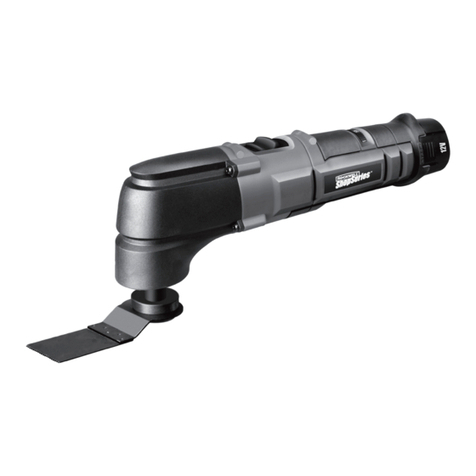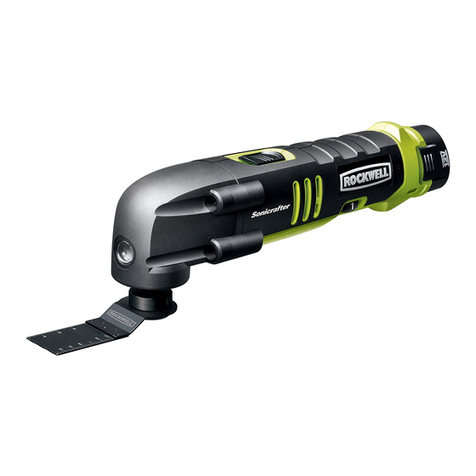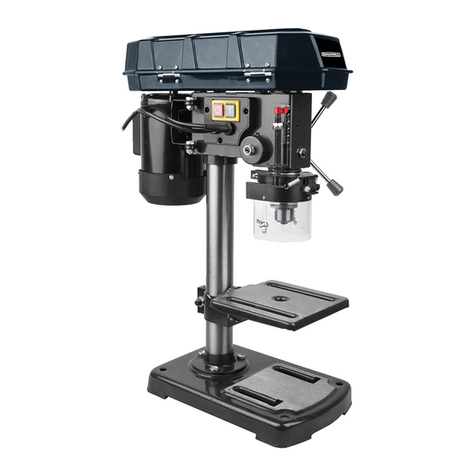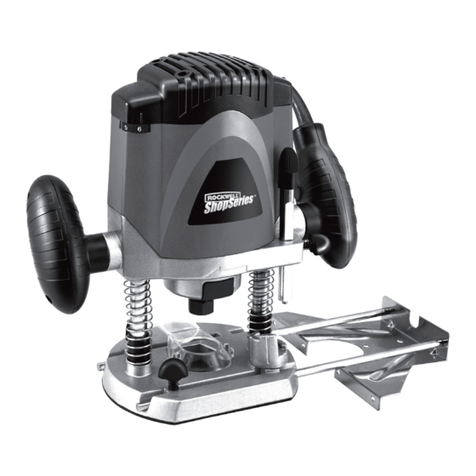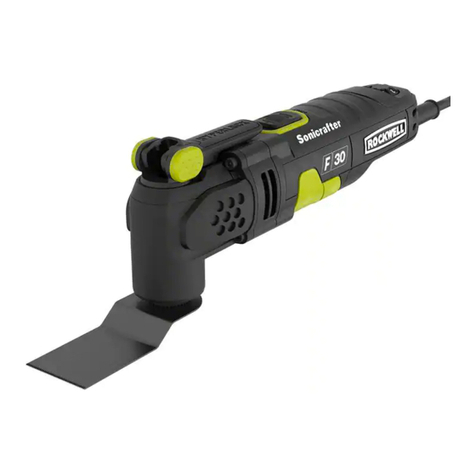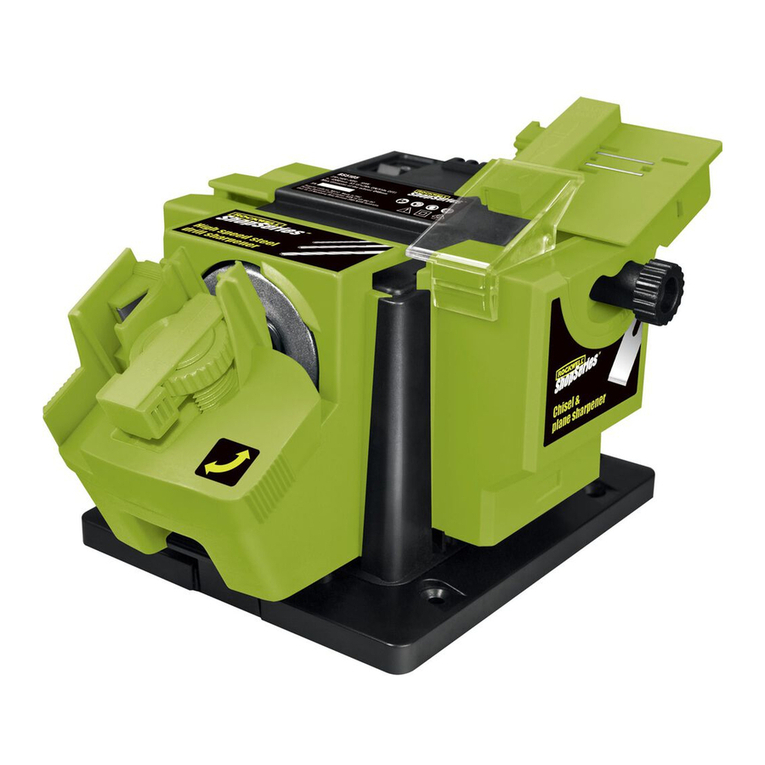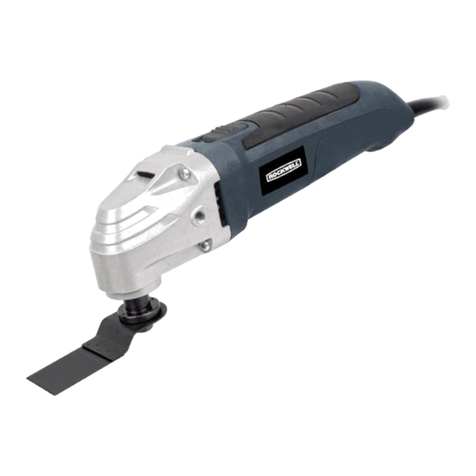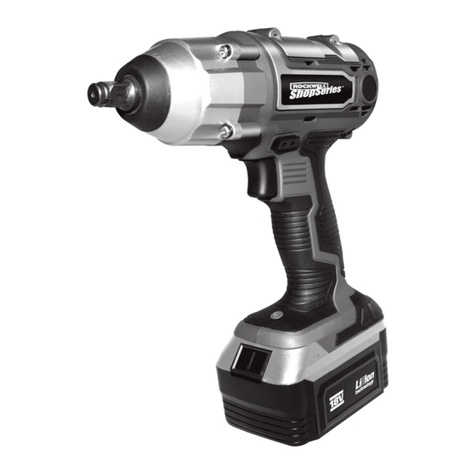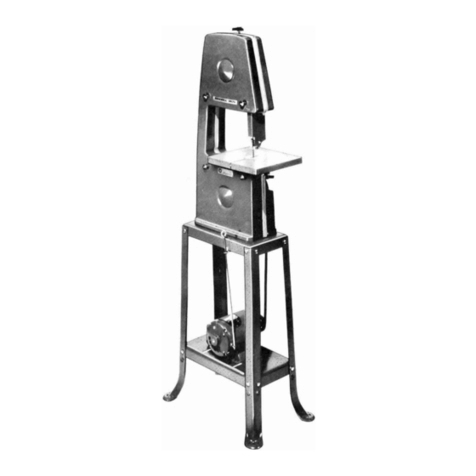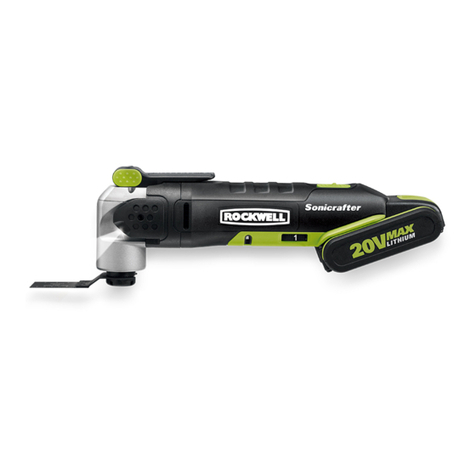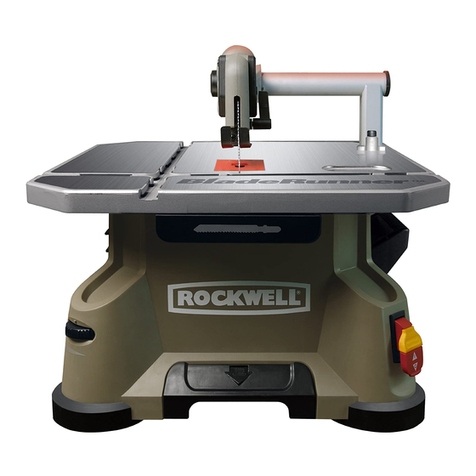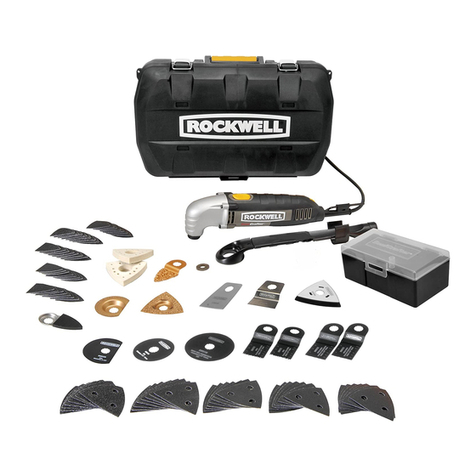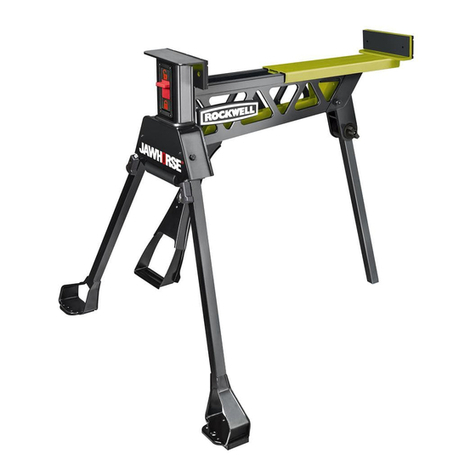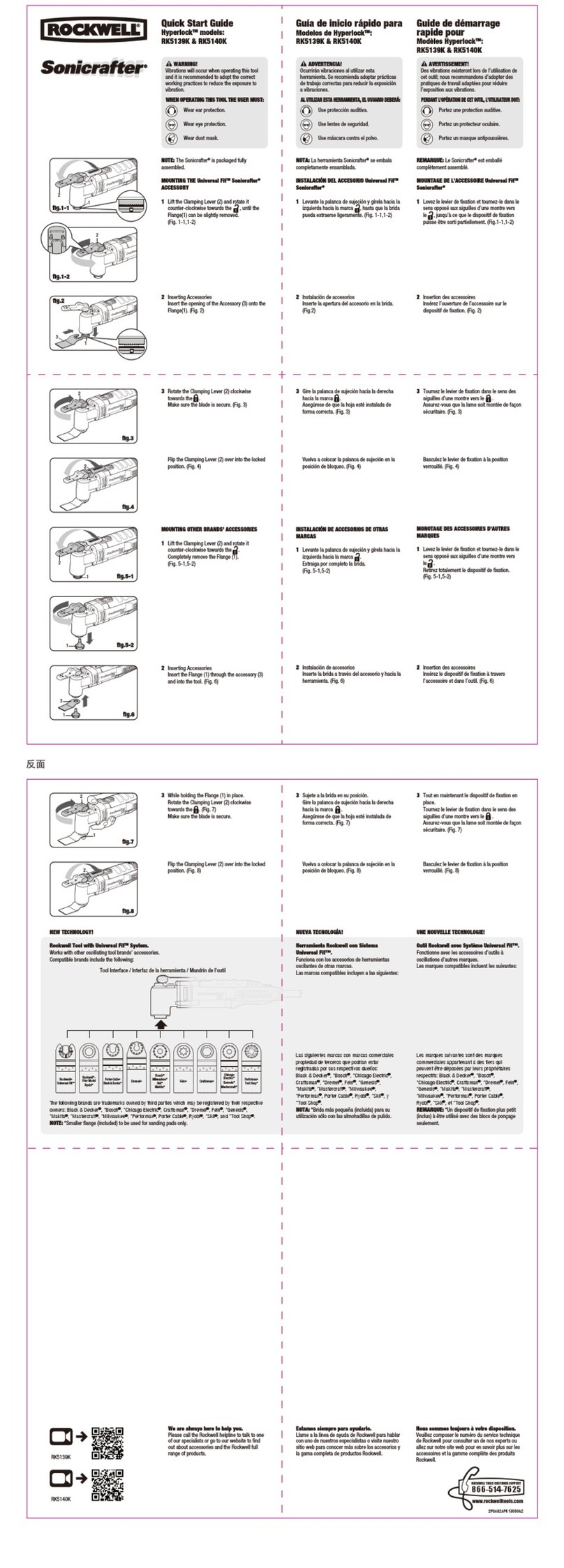DEPTH OF CUT
The amount of material removal by a single cut can be
any thickness from a very thin shaving to
114".
To
adjust for depth of cut, raise or lower the front table by
turning the hand knob (A) Fig.
15.
The pointer and
scale
(B)
Fig.
15,
indicates the amount the table has
been raised or lowered.
The pointer should point to the
"0"
mark on the scale
Men the front table is exactly level with the knives
at their highest point of revolution. If the pointer re-
quires adjustment, loosen the slotted screw to adjust
the pointer accordingly.
Fig.
15.
Fig.
16.
FENCE ADJUSTMENTS
The fence can be moved across the table and can be
tilted
45
degrees right or left at any position on the
table by means of the dual-control handle.
To move the fence across the table, pull the fence
adjusting handle away fran the machine until the handle
body (A) Fig. 16, engages the acorn nut
(B).
Loosen
the nut, move the fence to the desired position, and
retighten nut.
To tilt fence move the fence adjusting handle in to-
wards the machine, as shown in Fig. 16, to engage the
nut. Loosen nut and tilt the fence to the desired angle
right or left, and retighten nut. When tilting fence to
the right, stop block (C), Fig. 16, must be moved out of
the way.
The fence on your jointer features positive stops at the
most used fence positions of 90degrees and
45
degrees,
right and left. Check the fence with a square to make
sure the fence is 90 degrees to the table. if an adjust-
ment is necessary loosen set screw
(D)
Fig.
16,
and
turn the adjusting screw
(E)
in or out against the stop
block (C) until the fence is at 90 degrees to the table.
Then tighten set screw
(D).
Check the positive stops
at
45
degrees right and left and adjust if necessary.
CUTTERHEAD MAINTENANCE AND REPAIRS
After considerable use, the knives will become dull and
it will not be possible to do accurate work. Unless
badly damaged by running into metal or other hard
material, they may be sharpened as follows:
WHETTING KNIVES
DISCONNECT THE MACHINE FROM POWER SOURCE.
Use a fine carborundum stone; cover it partly with
paper as indicated in Fig.
17
to avoid marking the
table. Lay the stone on the front table, lower the table
and turn the cutter head forward until the stone lies flat
on the bevel of the knife, as shown. Hold the cutter
head from turning, and whet the bevelled edge of the
knife, stroking lengthwise by sliding the stone back and
forth across the table. Do the same amount of whetting
on each of the three blades.
COVERED
WITH
PAPER
WHETTING
KNIVES


